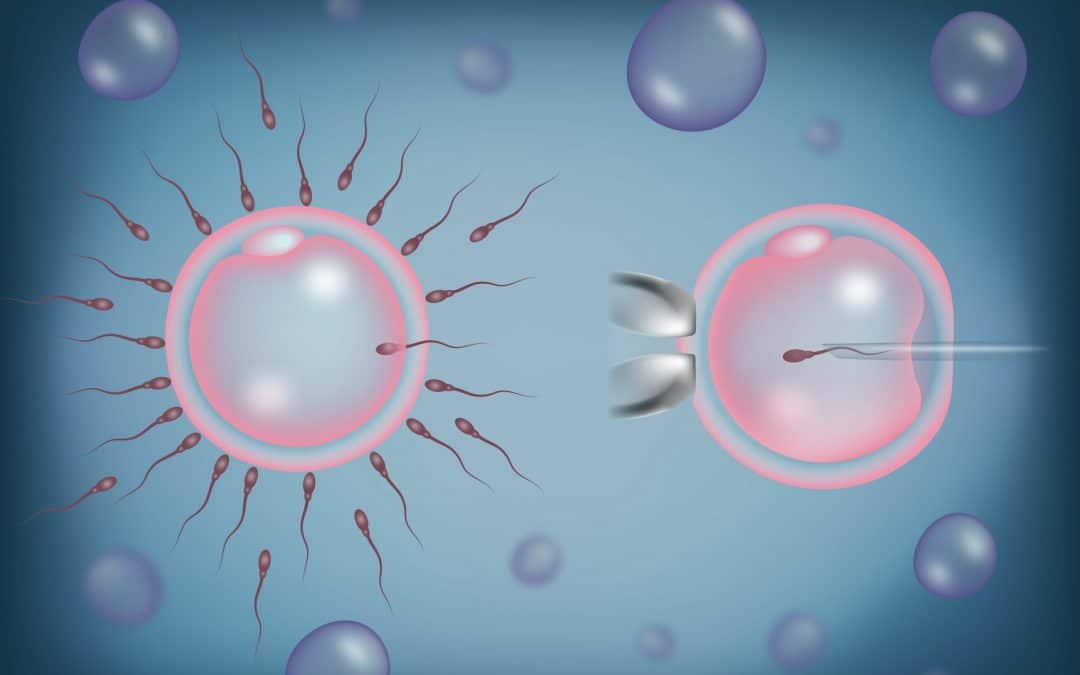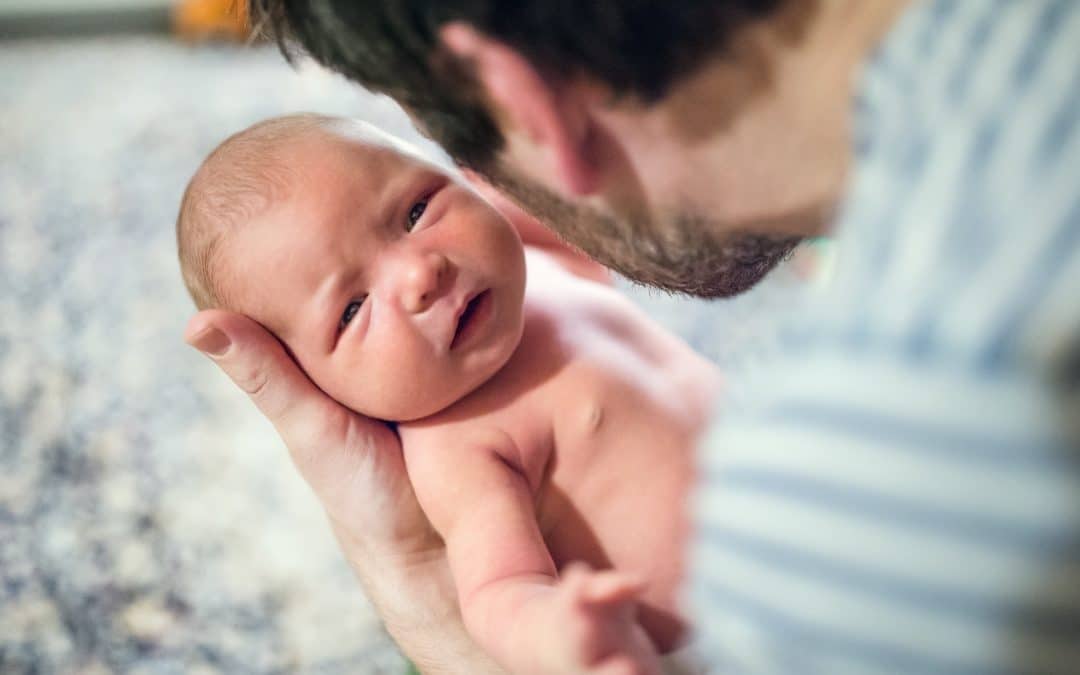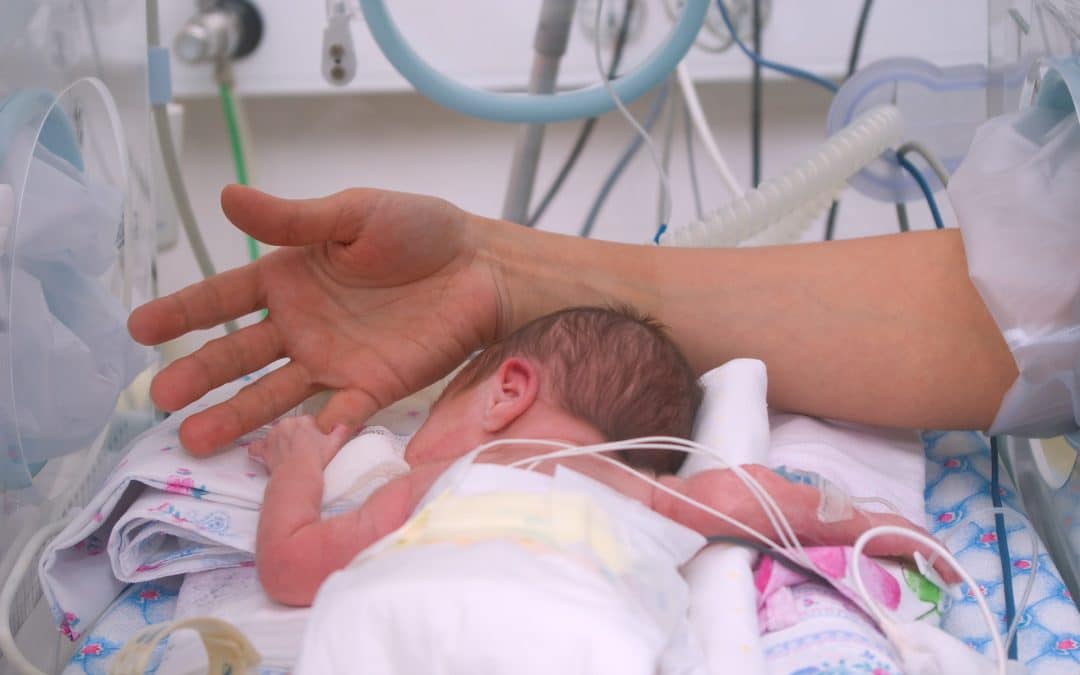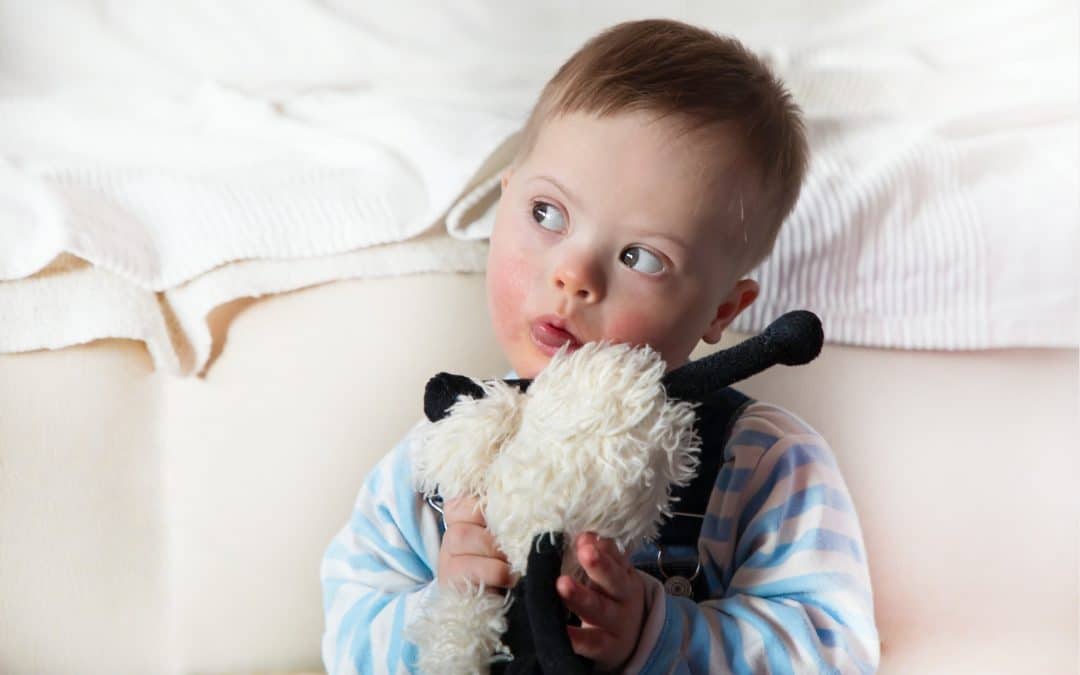
by Alliance VITA | May 21, 2021 | ART, News
Does assisted reproductive technology (ART) resort too often to the use of unnecessary and costly techniques?
In a recent study published in the Lancet, Australian researchers investigated this issue, especially focusing on the technique of intracytoplasmic sperm injection, known as “ICSI”.
They assert that in most cases, standard in vitro fertilization (IVF) is sufficient. In the conventional IVF technique, the woman undergoes ovarian stimulation followed by an ovarian puncture to collect a sufficient number of eggs, if possible, to perform in vitro fertilization, simply by pooling the eggs with the spouse’s sperm.
Since 1992, the so-called “ICSI” technique has also been employed. It is comparable to forcing the sperm inside the egg, via a micro-pipette. The ICSI technique was developed for situations of male infertility where the sperm count is extremely low. In this case, the natural selection of the sperm by the egg is obliterated.
Although conventional IVF is adequate, ICSI is being used increasingly throughout the world, even though it involves additional costs and unjustified risk-taking.
According to Robert Norman, Professor of Reproductive Medicine at the University of Adelaide and Ben W. Mol, Professor of Gynecology and Obstetrics “In the United States, between 1996 and 2012, ICSI use increased from 15% to 67% of couples where the male has a normal sperm count. In Australia, about 60% of cycles used ICSI in 2018. In Europe, about 70% of cycles use ICSI.”
Source: https://theconversation.com/standard-ivf-is-fine-for-most-people-so-why-are-so-many-offered-an-expensive-sperm-injection-they-dont-need-158227
The use of ICSI continues to become more and more widespread, even for cases unrelated to male infertility. Even though, as the study shows, the ICIS technique does not improve in vitro fertilization success rate when there is a normal sperm count.
Between March 16, 2018, and August 12, 2019, the researchers studied 1,064 couples who requested assisted reproductive techniques. Using random allocation, 532 fertilizations were done with ICSI, compared to 532 with conventional IVF. Couples in either group were just as likely to have a baby with a success rate of 35% for couples in the ICSI group, and 31% in the conventional IVF group.

by Alliance VITA | May 20, 2021 | News, Surrogacy
On May 18, 2021, in its House judgment, the European Court of Human Rights (ECHR) unanimously concluded that refusing to recognize two persons as parents of a child born of surrogacy, does not violate the European Convention on Human Rights.
The case concerns Valdis Fjôlnisdottir and others versus Iceland, since the courts in Iceland refused to recognize any parental link between a lesbian couple and a baby boy born to a surrogate mother in the United States in 2013. Upon their return, three weeks after his birth, they applied for the infant to have Icelandic citizenship and to have him registered as their son. Since surrogacy is illegal in Iceland, neither of the two female applicants were recognized as the infant’s parent, since neither of them is biologically related. The Icelandic authorities considered him to be an unaccompanied minor in Iceland, “but placed him in the foster care with the two applicants.” The women began adoption proceedings which were interrupted in 2015 by their divorce because they were no longer eligible to jointly adopt a child. In 2015 the vote of a new law allowed Icelandic nationality to be granted to the boy.
Following their divorce, foster care services placed the child alternatively with each woman, for a one-year period each time. Since 2019, the child has been living on a full-time basis with one of the two women and her new female partner, while the second woman and her new female partner have been granted equal visitation rights.
In 2016, the Icelandic court held that the biological mother should be declared as the child’s mother, and under the circumstances of the case the authorities were not obliged to recognize the applicants as parents, in accordance with the foreign birth certificate.
The applicants alleged that the authorities’ refusal to register them as parents constituted an interference to their rights. In 2017, they petitioned the ECHR, on the grounds of Article 8 (right to respect for private and family life) and Article 14 (prohibition of discrimination) as well as Article 8 of the European Convention on Human Rights.
The ECHR ruled that despite any biological relationship, the current situation did constitute “a family life” which is adequately protected by the authorities in Iceland, in particular since they granted citizenship to the child. The refusal to recognize the two women as parents is sufficiently founded on domestic law. The court also recalled that adoption would have been possible if they had not divorced.
The European magistrates also declared that in view of the “ethical issues inherent in surrogacy”, it should be kept in mind that individual countries have a “margin of appreciation”.
According to ECHR case-law, the 47 member states of the Council of Europe are not required to recognize a parental relationship between a child and his “intended mother”. Neither does the ECHR impose registering a transcript of the birth certificates of any child born via surrogacy or attributing the title of “mother” to the so-called “intended” mother who did not give birth, since these would be false declarations.
Indeed, the Court declared that: “The best interests of the child are not limited to respecting these aspects of his right to privacy. They include other fundamental elements, such as protection against the risk of abuse inherent in surrogacy, which do not necessarily advocate for recognizing a parental relationship with the ‘intended’ mother .”
However, in countries where this relationship is not recognized, the ECHR calls for considering other solutions such as adoption.
Alliance VITA laments that the ECHR’s position remains grievously ambiguous, since it does not condemn surrogacy as such, but rather, is promulgating a way to by-pass legal adoption. Adoption was instituted to repair harmful situations, whereas surrogacy deliberately violates a child’s rights: prior to conception, it instigates plans to organize how the child’s abandonment will make him eligible to be adopted.
In addition, such post-surrogacy adoption is contrary to the rules of international adoption, since the Hague Convention prohibits pre-birth agreements between birth mother and adoption candidates.

by Alliance VITA | May 20, 2021 | Family, News
On May 12th 2021, the French government published a decree in the official journal to specify the exact terms for extending paid paternity leave from 14 to 28 days.
Voted five months ago as part of the 2021 Social Security Financial Act, the new benefits for French fathers will become effective on July 1st. Paid paternity leave will be doubled from 14 to 28 days, with a requirement to take the first 7 days at the child’s birth. The rest of the paternity leave may be divided into two periods of at least 5 days which must be taken before the child reaches the age of six months. A report issued in June 2018 by the Inspection Générale des Affaires Sociales (IGAS) highlighted the discrepancies in paternity leave depending on the father’s work status and contract.
In private companies, 80% of permanent employees request paternity leave, compared to 48% of employees with fixed-term contracts. The compensation system for this leave remains unchanged, with the employer responsible for paying the first 3 days.
The paternity leave extension is one of many measures proposed in the expert committee’s report published in September 2020, entitled “The Child’s First 1000 Days, Where It All Begins”, chaired by neuropsychiatrist Boris Cyrulnik. The evaluation was originally launched by President Macron in September 2019 when he assigned the task to Adrien Taquet, Secretary of State for Children and Families under the Health and Solidarity Minister; with neuropsychiatrist Boris Cyrulnik as the chairperson.
Their report considers the first 1000 days as the period from the fourth month of pregnancy until the child is 2 years old. The report also admits to extend this period from the preconception period until the child’s 3rd birthday.
A choice which validates the importance of child development before and after birth.
The report quotes a great deal of scientific evidence to highlight the importance of child development during these first 1000 days.
The authors explain that “Paternity leave reinforces the father-child bond. Even a paternity leave of just a few weeks can lead to the father participating more in the care and development of his child. A German study shows that fathers who receive eight weeks’ leave further strengthen their relationship with their child in the long term, and this stronger bonding was seen to be very valuable by fathers. Another recent study showed that a father’s involvement in his young child’s education and activities, as well as his feelings and reactions during play time, are influenced by such things as the decreased time at work in favor of more time available for his child.»

by Alliance VITA | May 18, 2021 | Maternity, News
In France, prematurity is the leading cause of neonatal mortality and is responsible for half of all disabilities of perinatal origin. It affects around 55,000 births each year, or approximately 7.5% of all births in the country.
The British Medical Journal has recently published the EPIPAGE-2 study, which initially included 5170 premature children born between April and December 2011. The follow-up of these children from 25 regions in France was carried out for several years. Headed by researchers from “INSERM”, (French National Institute of Health and Medical Research) several teams [1] evaluated the children’s progress, their school integration, their recourse to social assistance, and their parents’ concerns about them. The researchers tried to better understand how prematurity impacts children, more specifically their neuro-motor, sensory, cognitive, and behavioral development as well as their learnings.
Children born between 24-26 weeks of amenorrhea are classified as extremely premature; between 27-31 weeks as very premature; and those born between 32-34 weeks as moderately premature.
A total of 3083 children were seen at 5½ years of age during consultations by specialists participating in the study. “The age of 5½ is a key time in a child’s development, making it possible to diagnose learning difficulties and study cognitive skills, which is much more difficult to explore in younger children”, emphasizes Pierre-Yves Ancel, EPOPé team leader.
The results of the study show that at age 5½ years, near-normal developmental outcomes can be expected for 35% of children born extremely premature, for around 45% of those born very prematurely, and for 55% of those born moderately prematurely.
The study also demonstrated that regardless of the degree of prematurity, over one-third of children had “minor difficulties”. Indeed, the more premature the birth, the more the child’s schooling needs to be adapted.
While 93% of moderately preterm children were enrolled in regular classes (with no specific support), this proportion was only 73% for children born extremely preterm.
The study revealed that over half of the children born extremely preterm, one third of those born very preterm, and one quarter of those born moderately preterm were benefiting from complex developmental aid such as speech therapy, physiotherapy, psychological support, etc. However, 20 to 40% of children with severe difficulties received no support. “It is unacceptable that children and families who need help do not have access to this help when it is available,” Professor Ancel declared during an online conference.
Prematurity is a real source of concern for parents, even when the child’s development is considered normal. Parents were most frequently facing behavioral disorders such as attention deficiency disorders, difficulty in controlling emotions, etc. The study highlights the importance of the environment in which the child develops and reinforces the need to offer families coordinated medical, educational and social support. In 2017, the British Medical Journal published the first part of this study, which showed that for the past 20 years, the children born prematurely have been living better and have fewer sequels to premature births.
________________________
[1] EPIPAGE-2 Study, carried out by the researchers from the Inserm-University of Paris team EPOPé – ” Obstetrical, Perinatal and Pediatric Epidemiology Research Team ” from the Center of Research in Epidemiology and Statistics (CRESS, Unit 1153) and involving teams from the AP-HP as well as from the Lille University Hospital.

by Alliance VITA | May 14, 2021 | handicap, News
A study has placed France above the European average for having recourse to abortion whenever Down’s Syndrome is detected.
A study published at the end of 2020 in the European Journal of Human Genetics, and recently cited in an editorial, evaluated the population of individuals with Down syndrome people throughout Europe, and the impact of prenatal diagnosis. The authors found that depending on the country, the data in the studies appeared randomly unsystematic, incongruent or absent. Therefore, they based their statistical methods on several factors: the mother’s age, infant mortality and the age pyramid, and the prevalence of Down’s syndrome according to the UN data, in order to standardize numerical assessments for European countries for the period of 2011- 2015.
The study’s main results are dealing with the number of individuals with Down syndrome in Europe in 2015 (417,000 individuals) and especially the impact of prenatal diagnosis on the prevalence of Down syndrome at birth. The authors estimate that for the period of 2011-2015, half of the babies with Down syndrome were aborted.
The estimated European average for abortion was 54% whenever Down syndrome was diagnosed. There were significant variations among the countries, with abortion rates estimated at 20% in Portugal, 50% in Germany, 68% in France and 83% in Spain, compared to 33% in the United States. The prevalence of Down syndrome at birth was 12.9 children per 10,000 births in the US, which increased slightly between 1981 and 2011. In Europe the birth rates for Down syndrome babies have only decreased, suggesting that Europeans systematically have recourse to abortion more frequently when Trisomy 21 is detected.
For France, the calculated rate of 68% differs from other studies, such as that where the Biomedical Agency reported a 77.3% rate of abortions when Down syndrome is diagnosed.
To explain the discrepancies from one country to another, the authors mention causes such as the country’s wealth and abortion policy. But the results also highlight how culture and acceptance of Trisomy 21 can have an impact as well. For example, the abortion rate was 20% in the Netherlands, whereas in Denmark the rate was twice as high at 42%.
The authors point out that non-invasive diagnostic screening tests (NIDS) also appeared to increase abortion rates, based on a report in 2019 showing that test results influenced the choice to resort to abortion.
The study shows that mothers accept more easily a postnatal than a prenatal diagnoses. The study also found that thanks to a better access to healthcare, the life expectancy of people with Down syndrome is increasing particularly in Western Europe.
Every day in France, associations work to improve medical research, to take care of people with disabilities, to give them their righteous place, to promote medical research and job insertion, and change the way people look at those with disabilities. This includes associations such as Trisomy 21 France, “Tombée du Nid”, the Jérôme Lejeune Foundation and the “Café Joyeux”.





